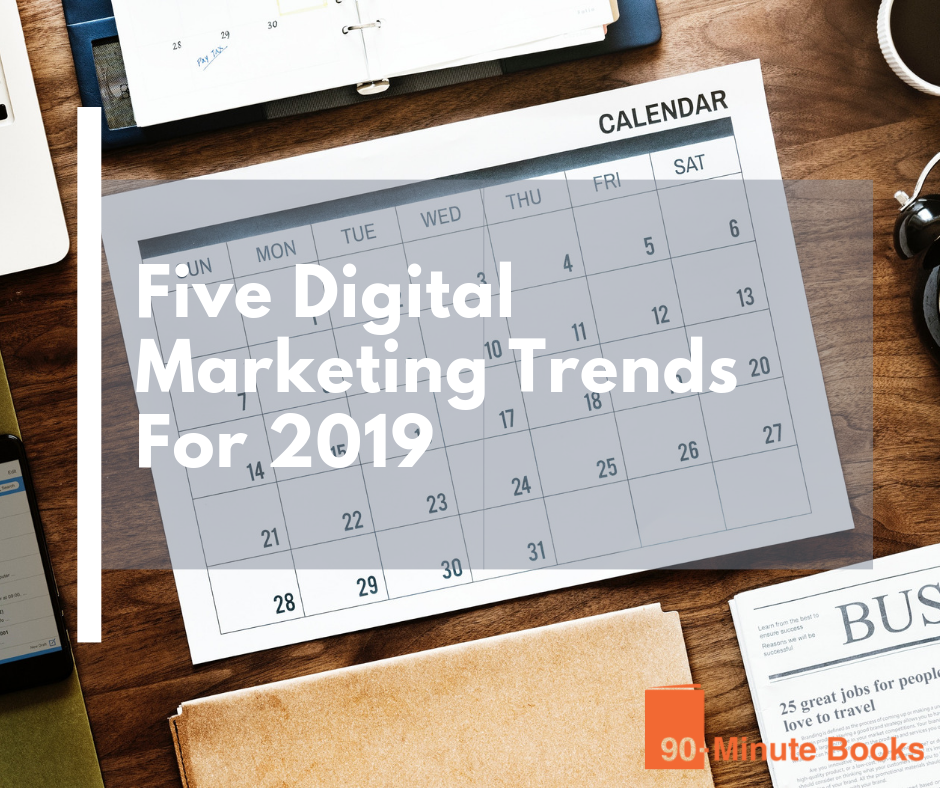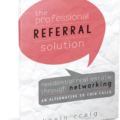It is possible that some potential customers may be interested in what you are offering and are willing to buy. These possibilities are known as ‘positive prospects.’ These high-grade leads assist businesses in significantly expanding revenues and optimizing ROI. Most companies will prioritize quantity when generating leads rather than quality.
Marketers can get top-notch leads through the use of up-to-date marketing automation technology. The key issue here is to figure out which prospects are of a high caliber and want to purchase your corporation’s goods and services.
What is Lead Generation?
Generating leads refers to creating interest in a company’s products or services and transforming that interest into sales inquiries. A web form is utilized in online marketing to obtain a visitor’s contact information, known as lead generation.
Traditionally, obtaining a record of names and their associated contact details was used for lead generation. The salespeople will begin reaching out to these people through cold calls.
Technological advancements make it far more convenient to create leads according to certain criteria and data. Businesses collect details about the likely purchasers and create advertising notices and sales presentations that meet the customers’ requirements. This most likely uses both inbound and outbound marketing strategies.
Generating leads effectively can streamline your sales process and result in a higher success rate when attempting to acquire customers.
How does lead generation work?
In today’s business climate, it is typical for firms to initiate their lead generation plan by constructing a website to broadcast their products and services. The consumer could look for a certain product/service, stumble across websites containing information, and fill out an online request form. The data they supply is checked and confirmed, followed by the lead’s referral to the sales department.
The idea behind lead generation is that it could be advantageous.
There is no shortage of tactics for producing leads, yet succeeding is comparatively complex. While this may give the impression of being uncomplicated and uncomplicated, it is far from it.
Companies should possess a very efficient apparatus and a plan for initiating leads to yield successful outcomes. If lead generation can be effectively set up, it can be hugely rewarding.
Importance of Lead Generation
Nowadays, businesses need to concentrate on creating leads, as this is an effective way to increase their website’s traffic and turn those prospects into paying customers, aiding the company to make more money. It would be challenging for the company’s executives to assess their audiences’ wants or likes without generating leads.
Lead generation enables marketers to accurately reach their intended viewers and develop a website that is engaging and tailored to their wants and needs. In addition, lead generation also enables businesses to:
- Choose the geographic location from where they want to generate leads.
- Tailor-made pricing on a per-lead basis.
- Help control the number of leads they wish to receive.
- Pay only for the leads that have been successfully generated.
Generating leads is very important for companies today. It differs from traditional phone calls because it provides a framework that structures the lead generation plan, guaranteeing the highest-possible return on investment. Rather than businesses locating their customers, customers can be drawn to them.

FREE BOOK
Discover the 5 Compelling Book Titles Types that create an ‘I Want That…’ response.
Different Stages in lead generation:
This statement is correct in asserting that outbound prospecting is an excellent tactic to generate leads in the B2B sector. Most of the means of creating leads stem from outwardly looking for prospects. We will present an overview of the eight steps in the lead generation process.
1. Planning and analysis:
At this point, it is essential to devise an effective strategy for acquiring leads. Begin by examining the market and making a thorough assessment of rivals. You should develop a portrait of the perfect customer. This profile can be built from the demographics, geographical location and technological information related to your target customer.
This profile will be beneficial in assisting you in finding suitable contacts, and you will require a custom description that will enable you to aim at those contacts. It’s possible to get an idea of what the prospective buyer is like by considering their personality characteristics, buying habits, aspirations, and any barriers they may face.
2. Doing some research:
You must prepare by honing in on optimal customer profiles and buyer characterizations. An investigation should be undertaken to assess the quality of incoming leads and associated contact details by utilizing an existing database. It is essential to monitor all incoming leads and inform the sales personnel of the findings.
3. Pre-targeting:
In the past, the sales staff would send multiple emails and make multiple phone calls. The outcome of cold outreach could be either coming out on top or falling behind. To maximize the benefits of cold outreach, we should do pre-selection.
An advertising approach that works to cultivate recognition of a certain brand among the people being targeted is referred to as pre-targeting. By employing pre-targeting, you can enhance your brand’s recognition, make prospects more amenable, and increase click-through rate, response rate and conversion rate when using outbound marketing techniques.
4. Landing pages:
Pages on a website can be utilized to gain clients to create promos tailored to an individual and a corresponding email. A page on a website that prompts a user to take a desirable action is known as a landing page. Using a landing page rather than simply linking to a website is advantageous as it focuses solely on one particular goal, leaving out anything that could be a potential distraction. This will also aid you in dividing the group into tiny clusters to deliver a very focused message.
5. Reaching out to the leads:
There are two phases in generating leads: you can make phone calls and send emails in succession. A lead with higher engagement and participation levels should be at the top of the list when making calls, compared to those that haven’t opened the email. Once you have completed both making calls and sending emails, you will know if the lead is worth pursuing further in the sales process. Every lead response is entered into the Customer Relationship Management system to keep track of campaign performance.
6. Reporting:
Information should be logged and relayed during all phases of lead generation. The reports should incorporate data concerning prospective contacts, effort expended on research, communication templates, the number of emails dispensed, emails that cannot be accepted, automated rejoinders, open fractions, subsequent efforts, determined leads and the conversion of these leads into finished business. This procedure carries on like a corkscrew and grows broader or narrower. It is your efforts that determine if the procedure is progressing as intended.
6 Simple Steps to Generate Leads With Content Marketing
To get leads through content marketing, you must find a way to collect information about prospective customers before they leave your page. Generating leads is about bringing people to your website, taking advantage of their presence, and converting them in some way, either through making sales or collecting contact information (email opt-ins).
These are 6 easy steps to utilize content marketing to generate leads.
1. Know your audience
Getting familiar with your target market is the initial step to creating leads through content marketing. There are plenty of ways to approach this; if you have ample time, it would be beneficial to attempt all of them.
Here are some ways to define your target audience:
- Conduct a survey
- Interview customers
- Research your competitor’s audience
- Use analytics tools (e.g., Google Analytics, Facebook Audience Insights)
This is the ideal moment to devise a customer character if you have not done so already. Having one clear-cut target customer in mind can help sharpen your content advertising and guarantee you’re reaching the ideal people.
2. Do keyword research
Once you know who your audience is, you can explore keywords to form the basis of your content marketing strategy. Keyword investigation is the top approach to discovering what your viewers would like more information about.
With keyword research, you can discover:
- Questions your audience is asking
- The topics your audience cares about
- Commercial keywords they’re searching for
Doing keyword research is critical to guarantee that your content applies to your followers. There is no benefit to constructing a large collection of compelling content if nobody is looking for it.
Investigating the correct choice of words can transform a project driven by enthusiasm into an attractive prospect for generating leads.
Essential phrases are essential in gathering more potential customers through your content marketing. People who are in the process of purchasing something use these keywords. They are trying to look for a certain thing, and if you take advantage of the opportunity, it might be your item!
Here are some examples of commercial keywords to watch out for:
- Get [product/service]
- Where to buy [product/service]
- Best [product/service]
- Award-winning [product/service]
- Online [product/service] store
To create more prospects in your content marketing, a detailed keyword exploration is critical as one of the primary stages. Use Google Ads Keywords Planner to get started.
3. Choose your content
When picking content, it is essential to be mindful if you are utilizing content marketing to generate leads. An array of options are accessible, but you must reflect on the target demographic to obtain the best outcomes.
The content you create will attract people to visit your website; it will bring in visitors and increase the likelihood of obtaining newer prospects. Discover what content your target audience desires the most.
Here are some examples of different content types:
Blog posts
Blog posts have become a must-have for content marketers as they are perfect for delivering news to your audience concerning the subjects they are concerned about.
Video content
If you want to make material that is both effortless to spread and captivating, video content could be an excellent choice.
Social media content
Using social media is great for interacting with your followers directly and flexibly. By using tailored content for social media, you can broaden your reach and direct more people to your website.
Infographics
Infographics are created in such a way that they are easily understandable and impactful to the viewer, making them a favorite of content marketers.
Podcasts
Podcasting is becoming increasingly popular as a type of content. Podcasts are perfect for helping your brand appear more relatable and for building your credibility in the field that you specialize in.
4. Create lead magnets
This is the key to creating leads: you must incorporate lead magnets into your content plan.
Lead magnets, sometimes called gated content or gated assets, are pieces of content created to be shared with your audience in return for their contact details, normally an email address.
To access lead magnets, an email address must be provided, which allows you to take the contact information of anyone who visits your website. This is a great benefit to marketers because they can use this path to communicate with potential customers in the near future.
Here are some examples of good lead magnets:
- Online courses
- Quizzes
- E-books
- Case studies
- Whitepapers
- Guides
- Free trials
- Evergreen Webinars
- Checklists
Most people have come to recognize that it is not wise to indiscriminately provide their email addresses to many different sources. Today, you must provide guests something of value in exchange.
To captivate your audience, ensure your lead magnets are striking, participating, appealing to the eye, and educational.
Your lead magnets should act as a complement to the content you create. The perfect goal is to build a distinctive attraction for every element of your website.
5. Optimize your landing pages
Repeatedly, website owners and business owners are missing out on the opportunity to produce and persuade people to buy their products because their landing pages are not as effective as they could be.
Regardless of the number of visitors to your website, your lead generation will not meet your expectations unless you have optimized your landing pages to maximize conversion.
Your lead magnet pages should have limited elements and have nothing superfluous. All elements of your landing page, content and appearance should be focused on encouraging visitors to provide their email addresses.
Navigation should be effortless on the top landing pages, with simple access points and content that is swift to scan.
Most people who come to your website won’t have the tolerance to study long sections about the advantages of your product or service. Instead, it is important to make it effortless for them to choose by incorporating obvious documentation, excellent illustrations, and plenty of social approval.
6. Promote your content
You must not only enhance your content, offer freebies, and configure your destination pages but also do some promotion! Getting your content out there is the only way to get more people to your website, particularly if you’re still refining your search engine optimization.
If you don’t share your content, you are not making the most of the effort you put into producing it.
Utilize the channels that you interact with your following to promote your material. You will most likely get leads from the platforms where you get the most interaction.
Let us examine the foremost tactics for advertising your material.
Social media
Do not become excessively involved in constructing an extravagant and unusual social media policy to attract the attention of your viewers.
Guest blogging
Guest posting can be extremely beneficial for advertising your material and creating more prospects.
Get ready to generate leads.
Creating more prospects from your content is an easy process. These six strategies can help you improve your content marketing tactics and bring the returns you expect.
Guest Post Disclaimer
The views expressed in this post do not represent the views of 90-Minute Books. The information has not been verified and should be considered an opinion. You are always advised to do independent research.











